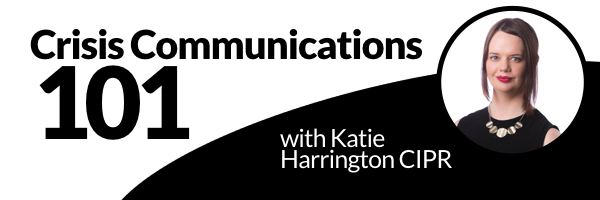Today, I want to share about a major crisis I managed the communications response for in Qatar last year, and how our Crisis Response Protocol helped our team to manage the incident.
I was working for a big oil and gas shipping company at the time. We had a fleet of some of the biggest ships in the world travelling from the Middle East to places as far afield as Mexico and Japan. Crises happened often enough that we had a dedicated Emergency Room, complete with its own wifi, phones, world maps and protocols.
That morning, one of our ships had collided with a much smaller ship off the coast of the Netherlands. The collision occurred at about 4am Dutch time, which was about 7am local time in Qatar. All 13 crew from the other ship had been sent flying overboard, but thankfully they were all recovered alive.
It was a complicated incident – while we owned the ship, a different company owned the gas that was being transported by the ship, and a third company employed the crew on the ship. Fortunately, we had a very clear Crisis Response Protocol that laid out everyone’s responsibilities.
As per the plan, I immediately asked one of my team to monitor Google news and social channels for mention of the incident. She also sent an email to all staff to inform them that a live incident was underway, and reminding them that any journalist enquiries should be directed to me. It’s crucial to keep your internal stakeholders informed during a crisis.
READ: Managing your stakeholders in a crisis
Meanwhile, I quickly drafted a holding statement using a template that was prepared and saved in our Crisis Response Protocol. We ran it past the other companies involved, who approved it quickly since it was based on a pre-agreed format.
We used this when industry publications heard what happened and called for our comment, so there was no panic when the journalists got in touch.
The statement was provided to our Finance Director so that he could inform the local stock exchange (a regulatory requirement) and to our C-suite executives who were tasked with informing government officials including the Minister for the Environment.
Read: How to draft a holding statement
After a hugely dramatic day, the story blew over quite quickly, with just a few trade newspapers making enquiries. Because we had clear protocols in place, everything went relatively smoothly when it could have gone horribly wrong.
After the crisis had passed, the response team met one more time to debrief and discuss learnings for the future.
Maybe this is not the kind of incident that would ever happen at your organisation, but let me ask you this:
- What if a former employee decided to sue you?
- What if a senior executive was found to be embezzling money from the company?
- What if there was a data protection breach that impacted a large number of your clients?
This isn’t scaremongering, it’s a fact that these types of incidents happen at companies large and small every day.
Would you be prepared? Do you have the right protocols in place?
Hit comment and let me know what kind of Crisis Response Protocol your team has in place for a crisis.
If your company doesn’t have any kind of plan for coping with a communications crisis, you’re at risk of damaged reputation, decreased brand equity and revenue loss. Companies pay PR agencies THOUSANDS of dollars to prepare for such events.
Our fully customizable Emergency Response Communications Protocol is an easy to follow procedure that covers all bases for dealing with a crisis, and we’re making it available here for $99.


One thought on “Crisis Communication: Does your organisation have a Crisis Response Protocol?”